#CreativeImpact Berlin Street Art with Anni Berlin

Photography and story by @Anni.Berlin
Art is impactful, especially on the streets where artists are using the canvas of concrete to stimulate social dialogue. To dive deeper on the subject, we’re touring Berlin’s street art with local photographer and creative @Anni.Berlin.
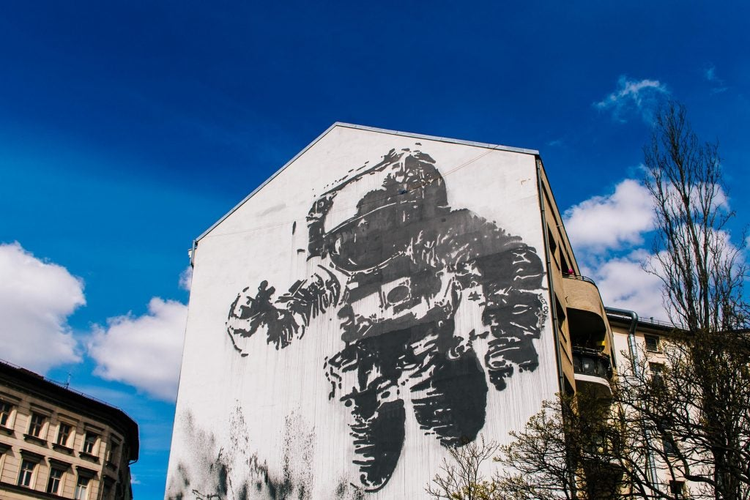
http://blogs.adobe.com/conversations/files/2016/05/Anni_P1324_1.jpg
Berlin’s diverse street art scene turns grey walls into living and breathing visual statements. Local tour guides and international artists help observers understand how and why street art is made here, emphasizing its social impact in a multitude of visual styles, far from the misperceptions of blind rhetoric and vandalism. By bringing street art to the people, the purpose is to increase public awareness of the street art’s diversity of styles and impact on society.
After the fall of the Wall, the topography of Berlin changed radically. Kreuzberg moved from the western fringe to the center of Berlin. Due to affordable rents, this district has always been a melting pot of artists from all over the world. Crossing Kreuzberg by train, you cannot miss this Astronaut (painted by Victor Ash), who is always about to land and – if you look at him from the other side of the street – about to put a flag into the ground. Playing with Berlin’s divided past, the Astronaut represents an important symbol of the Cold War: the race to space by the US and Russia. But for the observer it may be much more than this; it represents the magic of the human capacity, imagination and the desire to explore the unknown.
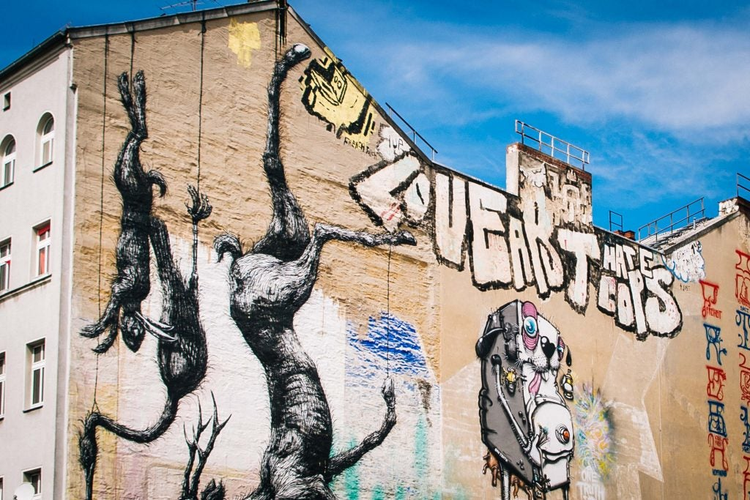
http://blogs.adobe.com/conversations/files/2016/05/Anni_P1324_2.jpg
Berlin’s street art is as varied as the city itself. It deals with history and politics, environment and current social issues like the gentrification of the upcoming districts and the displacement of socially deprived inhabitants. Graffiti artists express their ideas and reflect on social issues of any kind through murals that observe Berlin silently or that speak loudly on current topics for the entire city to see.
Some murals have no precise intention of meaning (like these four dead animals hanging headlong from the rooftop painted by ROA) but aim to create as many different reactions as possible. At the same time they invite other artists and crews to collaborate on concrete canvases and create a collage of multiple street art styles.
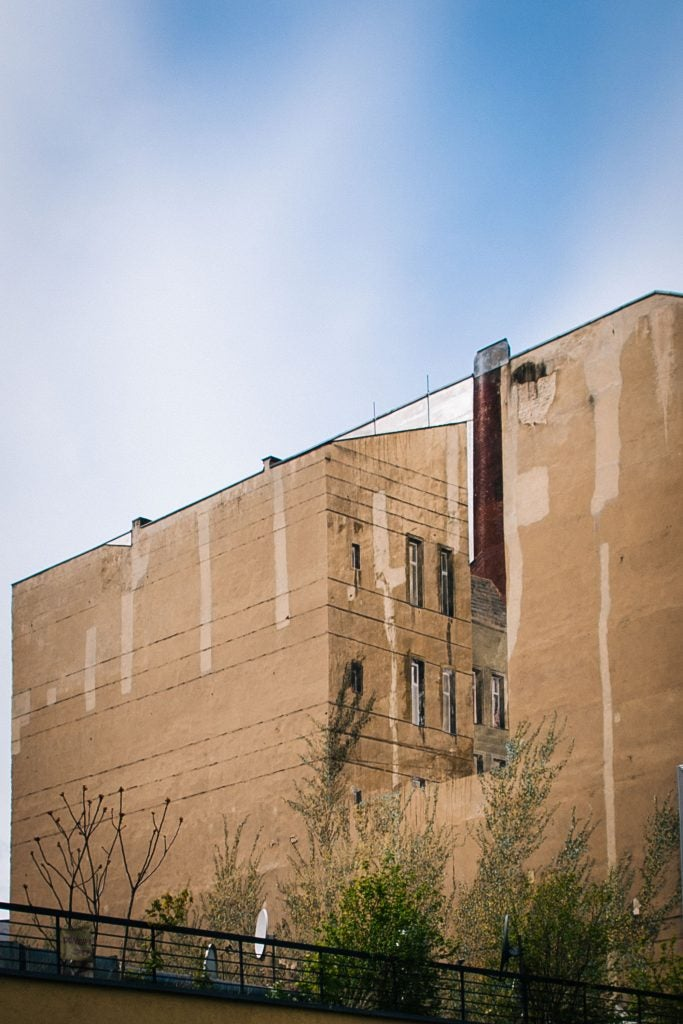
http://blogs.adobe.com/conversations/files/2016/05/Anni_P1324_3.jpg
Berlin’s street art reflects the sometimes subversive nature of the city. Passing by this building of Kreuzberg, you may not recognize the wall painting on it. This typical Berlin rear building is an optical illusion, and has been viewed for more than 25 years as an example of wall art paintings that became popular in Germany during the 1970s.

http://blogs.adobe.com/conversations/files/2016/05/Anni_P1324_4.jpg
As free and affordable spaces increasingly disappear in central Berlin, the area of the RAW (Reichsbahnausbesserungswerk; the former National Railway Repair Site) in Friedrichshain is one of the most important spots for Berlin’s street art and street culture: artists from all over the world are working here, organizing cultural events and exhibitions, workshops, and markets. The RAW is an intersection where artists from around the world meet, exchange artistic styles, debate with and inspire each other.
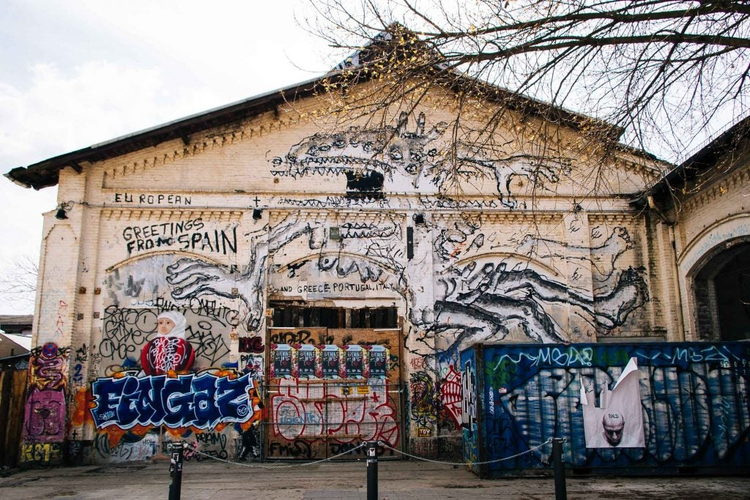
http://blogs.adobe.com/conversations/files/2016/05/Anni_P1324_5.jpg
This work by RallitoX is a dedication to those countries of the European Union that suffer from the economic crisis. The artwork is unfinished, to remind the onlooker that the crisis itself is not finished. The idea is to show that people, while chasing after selfish dreams like fortune and property, move into the wrong direction and forget about other human values.
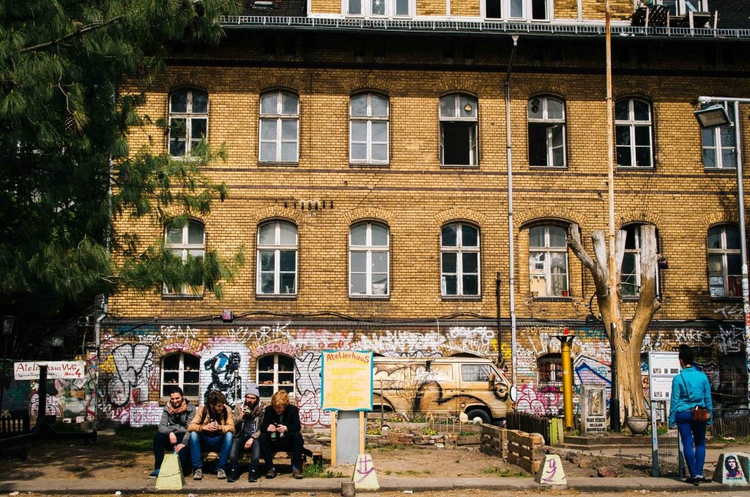
http://blogs.adobe.com/conversations/files/2016/05/Anni_P1324_6.jpg
The area of the RAW is currently self-organized and located in the zone of the former “Todesstreifen”, the death strip and no man’s land during the Cold War whose vast spaces brought many foreign investors who built hotel towers and office complexes. Currently there are plans for a big shopping mall in the neighborhood with more than 100 shops. As some former street art spots like the Tacheles in the district of Mitte have already disappeared and will be converted in the next years, the future will determine if this area will also vanish.
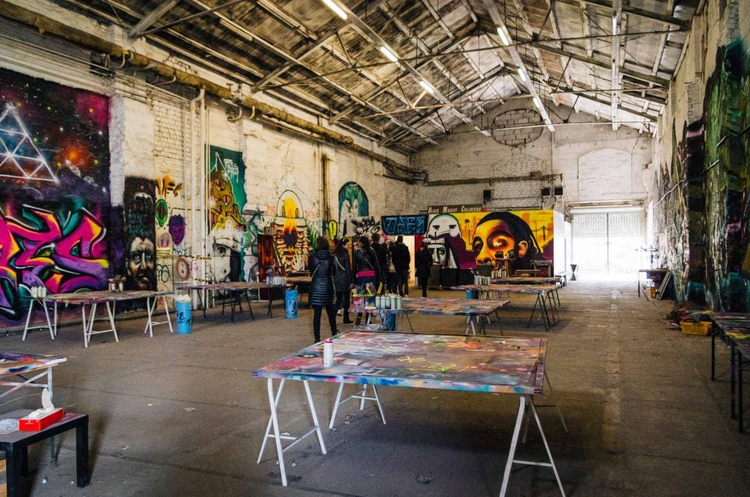
http://blogs.adobe.com/conversations/files/2016/05/Anni_P1324_7.jpg
Creative spaces in the center of Berlin are increasingly rare, but artists can still find workspaces in former abandoned fabric complexes outside the city center. There are great opportunities to take part in street art workshops and to learn different techniques like preparing stencils and painting on canvas. Street artists, graffiti writers and experts within the scene give ideas, instructions and guidance through individual or group workshops.
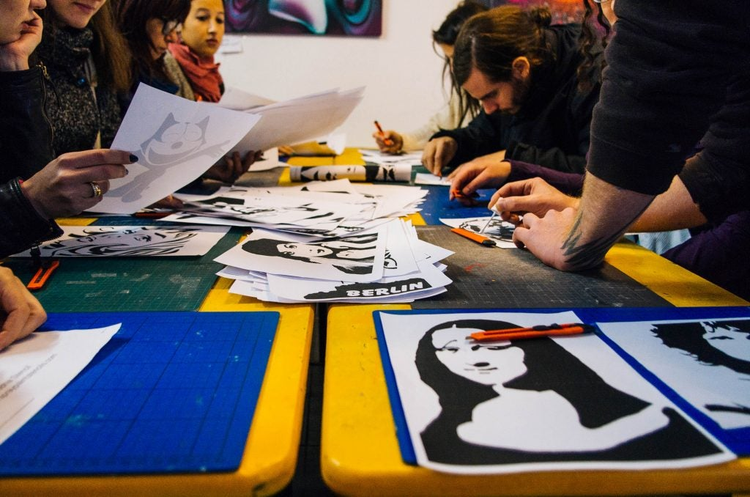
http://blogs.adobe.com/conversations/files/2016/05/Anni_P1324_8.jpg
The goal is to spark creativity and share personal and team-building skills for any purpose and all ages. The participant can take their own canvas home with the feeling that they have been a part of the street art scene. These workshops show that street art is open to everyone and meant to motivate them to become a part of this vibrant scene.
See more of Anni’s photography on Instagram at instagram.com/anni.berlin.